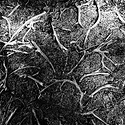DH_Studio
Member
Hey guys,
Wanted to ask if anyone knows what might cause thin, sharp lines on my 120 (Mamiya 645afdii) negs. This issue is brand new. The lines are uniform and are *not* dust on the scanner - they're in the negs. It's super subtle on the neg itself, looking directly at them at the right angle you can see them - but just barely. I scanned them and that's where you really see them. I read some other posts about banding but not sure this is that. You can see the lines continue down the whole roll and are pretty uniform. They're also pretty tightly crowded up against each other.
The film is Tri-X processed in D76 1:1 in a stainless steel tank with stainless reels, and Kodak agitation (5 to 7 quick inversions every 30 seconds).
The lines are on the whole reel, when I flipped them in the carrier and rescanned (in an Epson v700) with the emulsion down instead of up they were more subtle, leading me to believe they're on the emulsion side. I know the usual request is to photograph the negs themselves but it's hard to see. You can see them a little bit right over the bright light (I lowered the exposure to make the lines visible - a normal exposure wouldn't capture them at all.

This is what they look like on the actual scans. The shots themselves are a bit underexposed - not sure if that has any relevance - but I purposely darkened these in Lightroom to make the lines more evident.


Again...not the scans. I read some other forums about negs with lines on them like this and it opened the floodgates to some just wild guessing. One thing I have found really helpful here on Photrio is that people don't seem to do the random guessing thing as much, and seem to chime in more when they actually recognize an issue and give experienced feedback on how to problem solve.
Thanks!
Wanted to ask if anyone knows what might cause thin, sharp lines on my 120 (Mamiya 645afdii) negs. This issue is brand new. The lines are uniform and are *not* dust on the scanner - they're in the negs. It's super subtle on the neg itself, looking directly at them at the right angle you can see them - but just barely. I scanned them and that's where you really see them. I read some other posts about banding but not sure this is that. You can see the lines continue down the whole roll and are pretty uniform. They're also pretty tightly crowded up against each other.
The film is Tri-X processed in D76 1:1 in a stainless steel tank with stainless reels, and Kodak agitation (5 to 7 quick inversions every 30 seconds).
The lines are on the whole reel, when I flipped them in the carrier and rescanned (in an Epson v700) with the emulsion down instead of up they were more subtle, leading me to believe they're on the emulsion side. I know the usual request is to photograph the negs themselves but it's hard to see. You can see them a little bit right over the bright light (I lowered the exposure to make the lines visible - a normal exposure wouldn't capture them at all.
This is what they look like on the actual scans. The shots themselves are a bit underexposed - not sure if that has any relevance - but I purposely darkened these in Lightroom to make the lines more evident.
Again...not the scans. I read some other forums about negs with lines on them like this and it opened the floodgates to some just wild guessing. One thing I have found really helpful here on Photrio is that people don't seem to do the random guessing thing as much, and seem to chime in more when they actually recognize an issue and give experienced feedback on how to problem solve.
Thanks!
Last edited:










